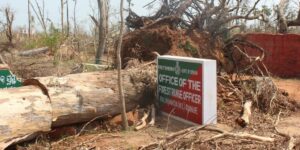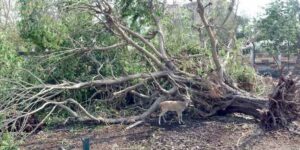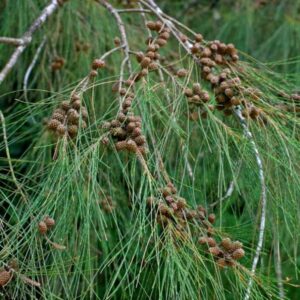OdishaPlus Bureau

As we observe World Environment Day(WED) today, there is a big threat to Odisha’s ecology after Cyclone Fani.
Fani devastated a vast greenery in more than a dozen districts. The Cyclone uprooted and damaged millions of trees in the coastal districts in Bhubaneswar alone, the deadly hurricane destroyed around 20 lakh trees alone.
The preliminary assessment made by the Forest department has revealed that Puri, Khurda and Cuttack were the worst affected districts. More than 50 percent trees in these districts have been uprooted in Balukhanda sanctuary of Puri Coast alone.

Impact Assessment
It is a challenging task to revive the greenery lost due to the cyclone say environmentalists. According to them,the loss of trees is likely to result in heavy soil erosion, rise in temperature at sea level, green house effect and loss of ozone layer.
Government Action Plan
Meanwhile, the Odisha government aims to plant over 1.3 crore saplings all over the coastal region of the state through a five-year scheme at an estimated cost cost of ₹200 crore.

Chief Minister Naveen Patnaik has directed the Forest Department to implement the ‘Five-year action plan on the revival of coastal shelter belt and afforestation programme’ on a mission mode. The programme covers planting of saplings on 8,000 hectares of land over a five-year period. Along with afforestation, about 30,000 uprooted trees would be replanted and restored in suitable places.
Supportive Effort
The government also plans to plant fruit-bearing plants in 12,000 hectares which will boost the livelihood of cyclone-affected people. Out of 1.3 crore saplings, the Forest Department will plant 80 lakh, while 50 lakh will be planted by different educational institutions, industrial and private areas. It is planned to plant cyclone-resistant trees like Neem, Karanja, Baula, Jamu, Korila, Chatian, Khaira, Arjun, Mahyoni, Ashok, Harida, Bahada, Shisu, Katha Champa and Dimiri. All modern techniques will be adopted for this re-greening.
Civil Society Response
Massive plantation through a convergence mode is the answer to maintain the ecological balance .This was the outcome from a workshop organized by CYSD on eve of the WED. It was attended by State Forest Department officials, officials from Muncipal Corporation, members from Civil Society Organizations,people Business community and Panchayati Raj Representatives.
Civil Society Responds to FANI (CSRF) deliberated on steps to be taken under the ‘Green Odisha Drive‘ to deal with the adverse climatic effects. It also discussed rehabilitation/ translocation of cyclone affected trees, preparation of bio-manure from green wastes, decentralized nursery and mass plantation drive. The participants felt that all this would require collective action at every level.A plan of action has been devised to make Green Odisha Drive successful.

Shelter belts are strips of vegetation composed of trees and shrubs grown along the coasts to protect coastal areas from high velocity winds and also from devastation like the ones caused by Fani.
University Study
According to a study by Professors Aruna Kumari Mishra, Hemanta Kumar Patra, Anath Bandhu Das, Dr Chinmay Pradhan and Dr Saroj Kumar Sahu of Utkal University, post- Fani impact on Odisha’s coastal environment will be harsh. They foresee two meteorological patterns: scanty rains and severe winter. In the coming days summer days will be agonizing says the study. The research has emphasized on massive plantation alongside roads, highways and open lanes. Since there is enough availability of fire wood; people in the rural areas will be tempted to cook food with the wood stack which will add to air pollution warns the study.

Jhaun Plantation
The study further says that Casuarina equisetifolia – popularly known as Jhaun – specie should be planted along coasts on a priority basis. This non-mangrove species is used as bio-shield along the coastal zone – better known as shelter belts. Shelter belts are strips of vegetation composed of trees and shrubs grown along the coasts to protect coastal areas from high velocity winds and also from devastation like the ones caused by Fani. They also serve as sand binders and prevent sand erosion.




















